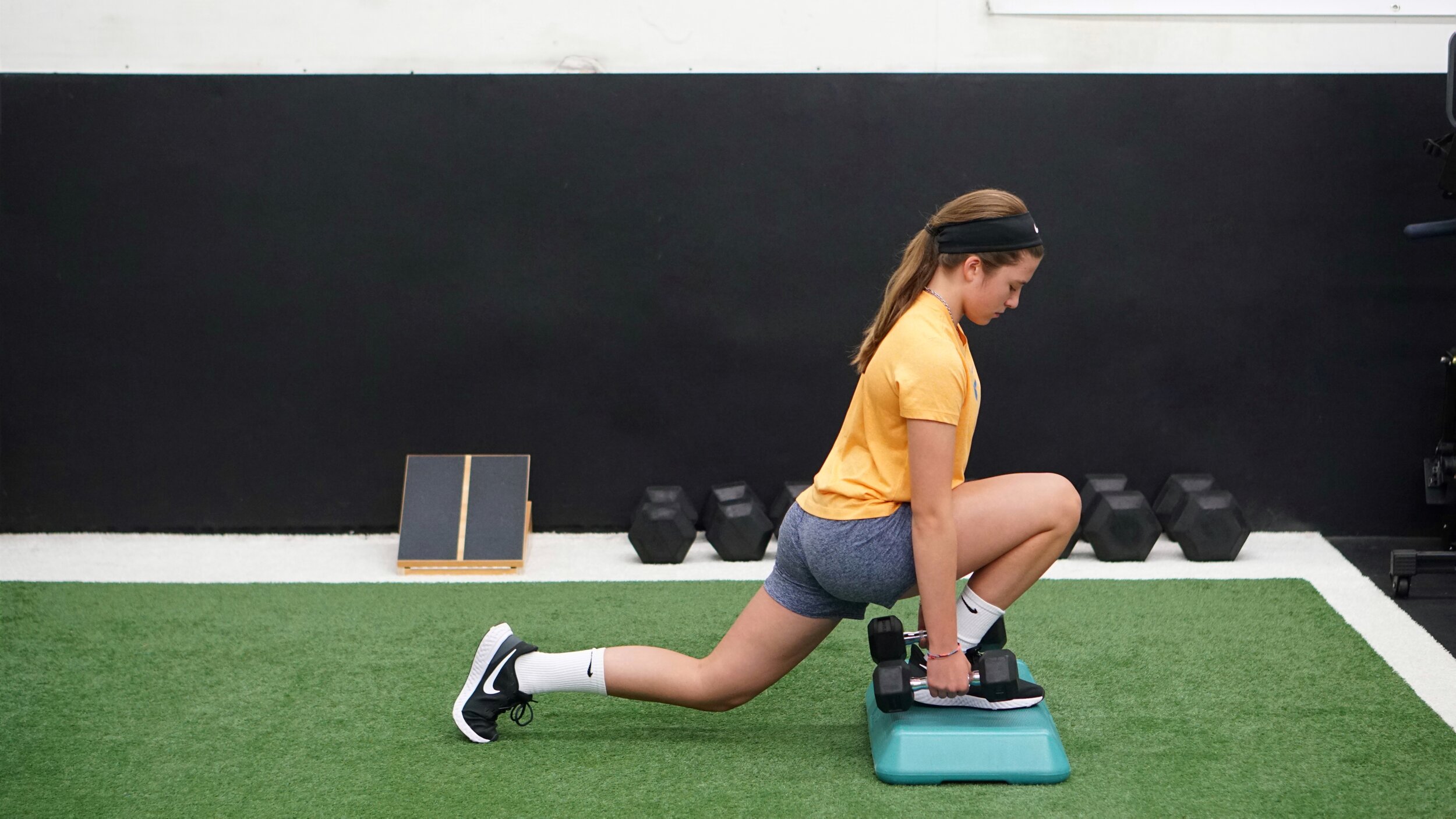Exercises you Should be Doing: ATG Split Squat
The ATG Split Squat checks a lot of boxes when it comes to improving strength and mobility. We frequently program it as either part of our athletes’ movement prep or more heavily loaded in the main portion of their workout. Lets work our way up the kinetic chain to explain why this exercise is so valuable.
1.) Ankles – If we follow a joint by joint approach, we want the ankle to be mobile and the knee to be stable. If the former isn’t the case then the latter won’t be either. In this variation, our athletes are loading ankle dorsiflexion through their largest possible range of motion. This, more so than stretching is the most effective way to make lasting mobility adaptations. Ankle stiffness can be an advantageous quality for speed and explosiveness so we’ll make sure that plyometrics and other drills are also incorporated to train both both qualities.
2.) The Knee – In the simplest form, training is designed to prepare your tissues for the demand of your sport and activity. Developing structural strength through a pattern like knees over toes is important as it’s a position seen during high velocity change of direction and jumping takeoff. The function of the Quadriceps is to stabilize the patella and extend the knee. Split Squat variations are effective for strengthening this muscle group. While we’re unable to correlate specific metrics in the gym to injury prevention, this could have implications on protecting the ligaments in the knee.
3.) Hip Flexor – “Tight” hips typically need to be strengthened not stretched (while also looking at Pelvic position). With muscles being weakest at their extreme end ranges of motion, we know that “tightness” can be a protective mechanism for the Nervous System to avoid muscles being overly lengthened. During the ATG Split Squat we see the Hip Flexor of the trail leg strengthened through a full range of motion. This signals the body to be more confident accessing a greater range of motion.
The movement can be regressed and progressed according to your current movement capacity and strength level. Have any questions? Email us at unifiedhp@gmail.com

